Key takeaways:
- Selective mutism is a complex anxiety disorder in children, causing them to struggle with speaking in specific social situations while being able to communicate comfortably at home.
- Effective anxiety management techniques, such as deep breathing and creating a safe space for expression, can empower children with selective mutism to engage socially.
- Recognizing subtle signs of anxiety in children, such as withdrawal and changes in behavior, is crucial for providing appropriate support.
- Building communication skills through methods like storytelling and active listening can help children overcome anxiety and feel more connected to others.
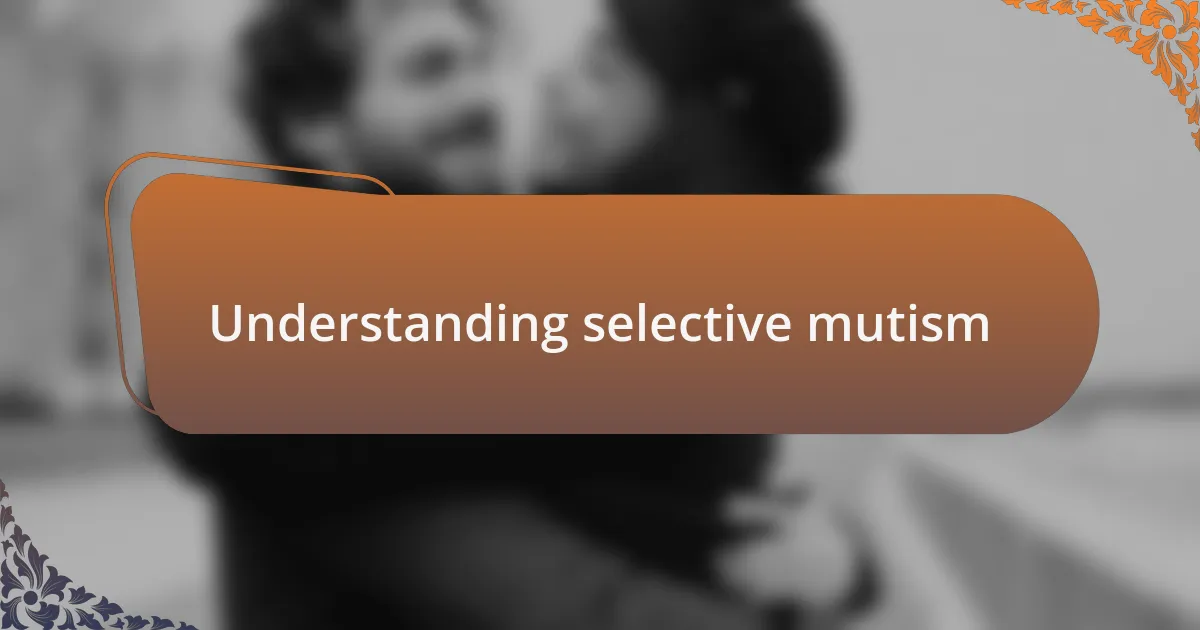
Understanding selective mutism
Selective mutism is a complex anxiety disorder primarily affecting children, where they struggle to speak in specific social situations despite being able to communicate comfortably in other settings, like at home. I remember meeting a young boy who would light up and chatter away in his living room, yet the moment he stepped into a classroom, his voice would disappear. It makes you wonder, what causes a child to feel so overwhelmed that speaking becomes nearly impossible?
Understanding this condition requires us to recognize that it’s not merely shyness; it’s rooted in deep-seated fear and discomfort. These children often find themselves in a silent battle, feeling an immense pressure that hinders their ability to express even the simplest thoughts. Have you ever felt so anxious that you couldn’t find the words, even when you desperately wanted to? It’s a relatable feeling, yet for these children, it can become a daily struggle.
Moreover, selective mutism isn’t a reflection of intelligence or desire to communicate; rather, it’s a manifestation of anxiety that can be quite isolating. I once spoke with a parent whose child faced this challenge, and the heartache of watching their child struggle to connect with peers was palpable. The journey toward understanding and supporting a child with selective mutism is crucial, as they often just need a safe space to find their voice.
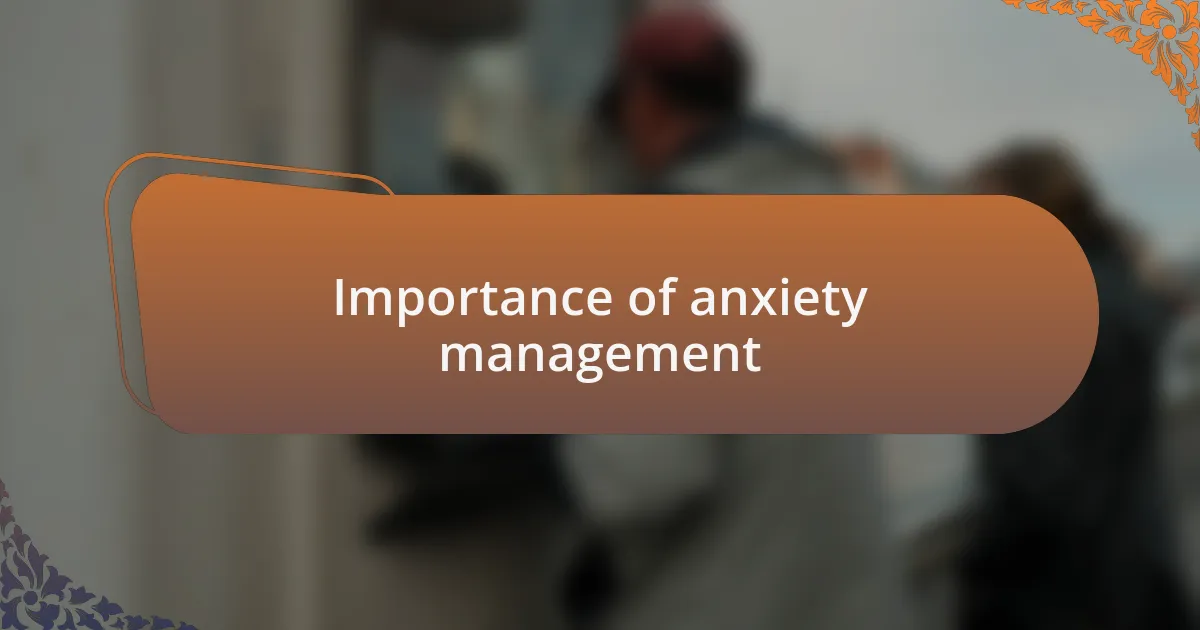
Importance of anxiety management
Managing anxiety is absolutely vital, especially in the context of selective mutism. When anxiety is left unchecked, it can spiral, making everyday interactions feel daunting. I remember feeling my heart race in social situations; without effective anxiety management, it’s easy to retreat into silence, much like those who experience selective mutism.
Effective anxiety management cultivates a sense of safety and control. I’ve learned that techniques like deep breathing or grounding exercises can create a buffer against overwhelming situations. Have you ever noticed how a few deep breaths can help center your thoughts? For those grappling with anxiety, these small tools can empower them to step out of the shadows and engage with the world.
Furthermore, addressing anxiety head-on opens doors to better social interactions and improved relationships. I once observed a child who struggled to communicate, but after trying different anxiety-reduction strategies, I saw a remarkable transformation. Watching them finally engage in conversation was not just heartwarming; it reinforced the idea that managing anxiety allows voices to be heard—even when it seems impossible.
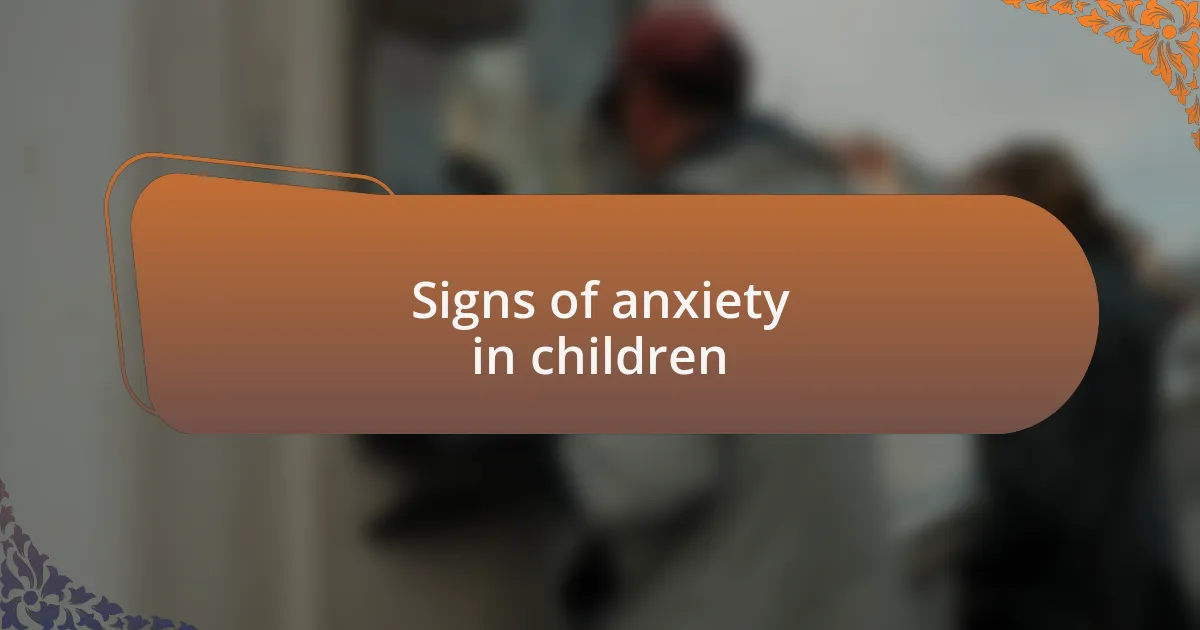
Signs of anxiety in children
It’s often easy to overlook the subtle signs of anxiety in children, but recognizing them can be a game changer. For instance, I’ve seen children suddenly become withdrawn in familiar settings, as if the joy has just evaporated. Their body language shifts drastically; a child who was once lively might start fidgeting, avoiding eye contact, or even exhibit signs of physical discomfort like stomachaches or headaches. Have you ever noticed how a child’s demeanor can shift seemingly overnight?
Another significant indicator can be changes in their routine or behaviors. For example, there was a time when a friend’s daughter, normally excited about school, began to resist getting ready in the morning. I could see her distress manifesting through tantrums or sudden tears—small cries for help that often go unnoticed. These reactions highlight how anxiety can disrupt not only their peace but also their daily lives.
Sleep disturbances are also common. I still recall a young boy I once mentored who struggled to fall asleep, his mind racing with worries about the next day’s social interactions. When children begin to express their fears about the smallest situations, it’s imperative to take a closer look. Are they anxious or overwhelmed? Understanding these signs can equip us to provide the support they need to navigate their anxiety more effectively.

Strategies for managing anxiety
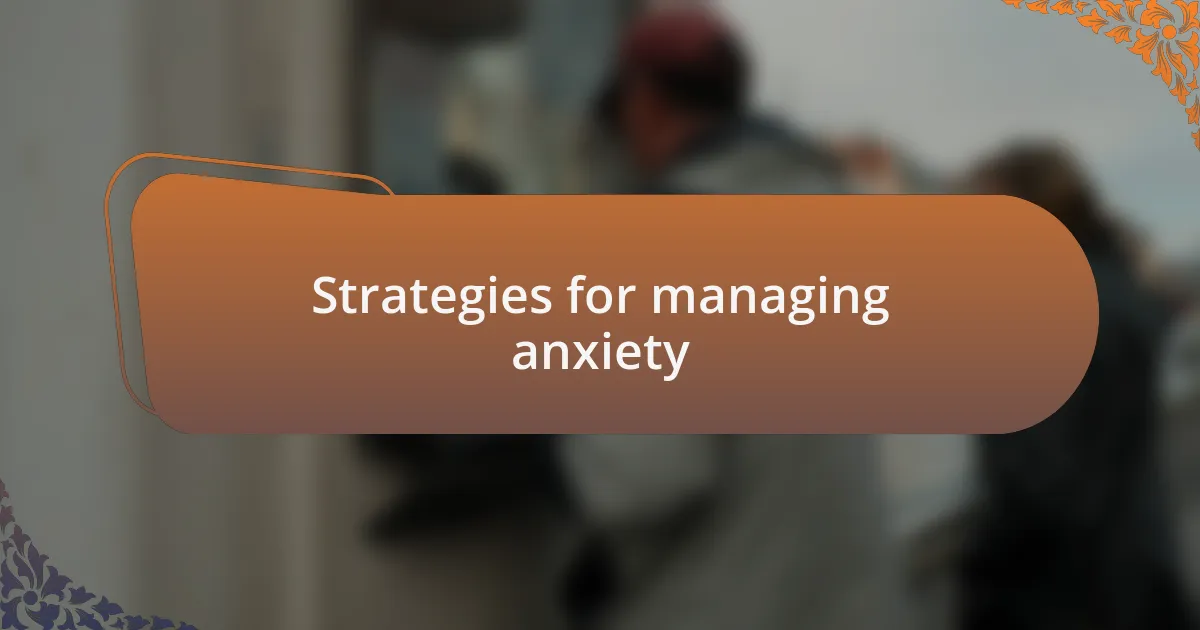
Strategies for managing anxiety
One of the most effective strategies I’ve found for managing anxiety is the practice of deep breathing. Whenever I felt overwhelmed, taking a moment to close my eyes and focus on my breath helped ground me. It’s amazing how something so simple can reduce physical symptoms of anxiety, like a racing heart or tightness in the chest—have you ever tried just pausing to breathe deeply in your own anxious moments?
Another technique that I’ve seen work wonders is creating a safe space for expression. For instance, I remember working with a child who loved to draw. By encouraging her to sketch her feelings, she transformed her anxiety into colorful expressions on paper. It was inspiring to watch her communicate what she couldn’t yet say out loud. Have you or someone you know ever found solace in creative outlets like this?
Finally, engaging in regular physical activity has been pivotal in my personal journey. Even a short walk can clear the mind and reduce anxious thoughts. I’ve noticed how movement not only helps release endorphins but also shifts my focus away from what’s stressing me out. Isn’t it fascinating how our bodies and minds are so interconnected? Exploring these strategies can lead to significant improvements in managing anxiety effectively.
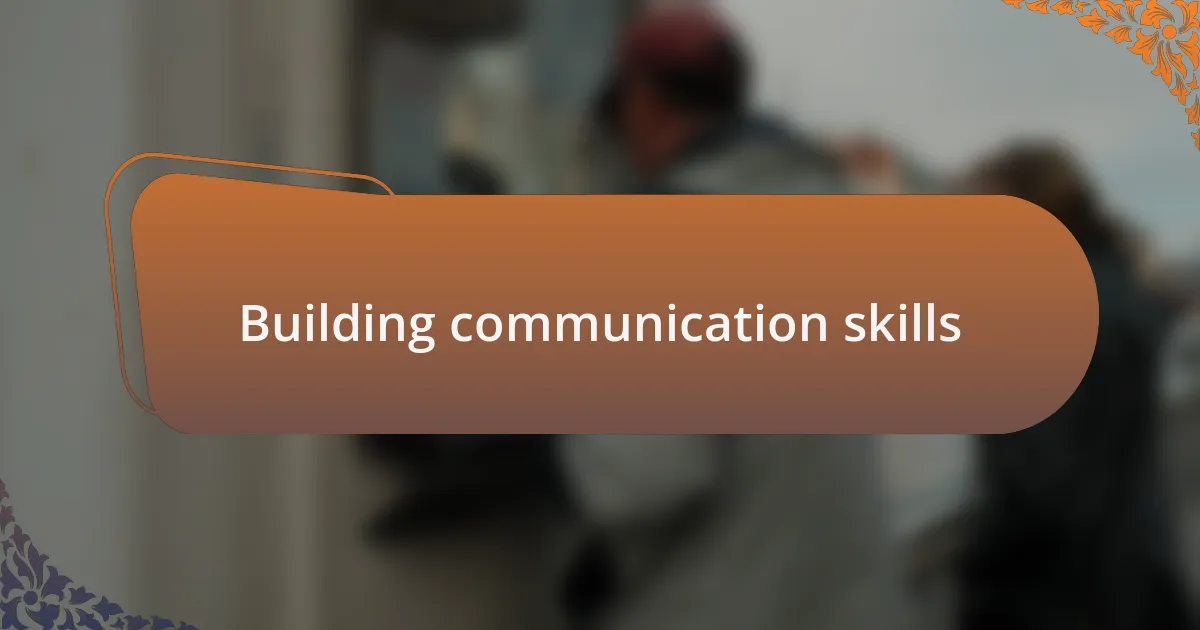
Building communication skills
Building communication skills is essential for overcoming anxiety, especially when it comes to selective mutism. I remember one particularly challenging moment when I was encouraged to role-play daily scenarios with a therapist. This practice not only boosted my confidence but helped me find my voice in situations where I previously felt mute. Have you ever felt as if words escaped you during important moments?
Another powerful method I’ve experienced involves using storytelling as a means of expressing emotions. I often recount my own narratives, weaving in parts where I struggled to communicate. This not only makes my feelings more relatable but also serves as a bridge to connect with others. Do you find it easier to express yourself when you share a personal story?
Finally, practicing active listening can significantly enhance our communication skills. I learned that genuinely hearing others and validating their experiences helped me feel more comfortable opening up in return. It’s a rewarding exchange; when we listen deeply, we create a safe space for others to share their thoughts. How does it feel to you when someone truly listens to what you have to say?
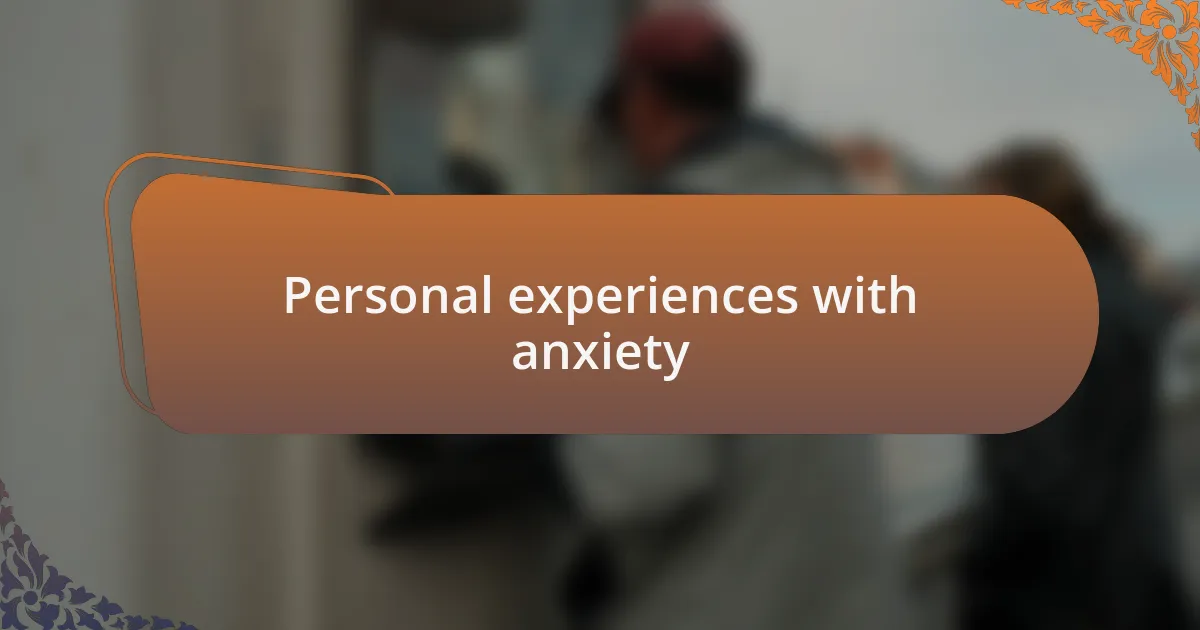
Personal experiences with anxiety
Experiencing anxiety has often felt like standing on the edge of a diving board, staring down into an unknown depth. I distinctly remember moments where even the simplest tasks, like speaking in a group, became overwhelming. My heart raced, my palms were sweaty, and I found myself retreating into silence, wondering if anyone else felt as alienated as I did in those moments.
There was a time when I learned the importance of grounding techniques during particularly anxious episodes. I recall sitting in a bustling café, my thoughts swirling as I waited for a friend. I focused on my breathing, counting each inhale and exhale, and slowly felt the storm inside me quiet. Isn’t it fascinating how a simple shift in focus can change our internal landscape?
Another personal lesson came from confronting my feelings through art. I began creating visual expressions of my anxiety—abstract paintings that mirrored my emotional turbulence. This process not only allowed me to release pent-up feelings but often prompted me to ask others about their own experiences with anxiety. Have you ever found an unconventional outlet that helped you articulate your feelings?

Seeking professional help
Seeking professional help can feel like a daunting step, yet it’s one of the most pivotal moves I made in managing my anxiety. I vividly recall sitting across from my therapist, feeling vulnerable yet hopeful, as we explored my feelings and experiences. It was in that safe space that I learned to voice my thoughts without fear of judgment; how many of us long for such a sanctuary?
In my journey, I discovered that therapists often bring invaluable tools to the table. Cognitive-behavioral therapy (CBT) was a game-changer for me, helping to reshape my thought patterns. It’s amazing how a professional can guide you to identify and challenge those anxious thoughts—have you ever noticed how an outsider’s perspective can illuminate hidden truths?
Moreover, incorporating medication as a part of my anxiety management was a decision made with guidance from my healthcare provider. While it was initially intimidating, finding the right medication helped stabilize my emotional landscape significantly. Isn’t it liberating to know that seeking help means you don’t have to navigate this journey alone?